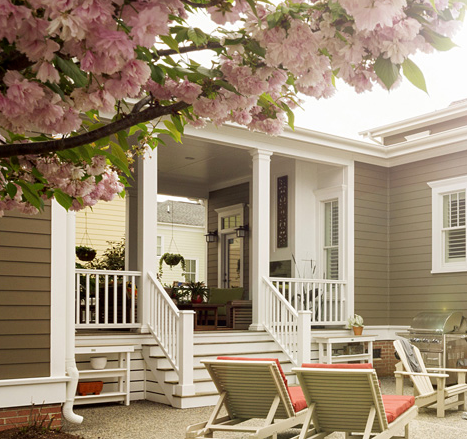Vinyl siding is affordable and can be easily installed on homes or other structures. It comes in a wide variety of colors. These colors are comparable to paint colors. You have the option of smooth or wood grain textures. Moreover, you can choose standard lengths, with straight edges or with scalloped edges, as well as other types.
Vinyl siding first came to the market in the late 1950s as an alternative to aluminum siding. It was first produced at an independently-owned manufacturing plant in Columbus, Ohio. The manufacturing process involved a process known as mono-extrusion, which formed the profile from one single piece of material. Back then, manufacturers did the combination of vinyl siding colors manually. However, the process has been improved to produce vinyl siding with unmatched durability and color combinations.
In addition to its durability and low cost, vinyl siding installation is also very eco-friendly. You can use the old vinyl panels for other home projects or donate them to construction reuse centers. If you’re planning to sell your home soon, replacing your old vinyl siding will ensure you’ll get more money than you spent. A recent study by the Vinyl Siding Institute revealed that replacing your home’s siding can yield a 68% return on investment. Since it can increase the value of your home, it is essential to know how to clean and maintain them.
Pressure water for cleaning
Keep the pressure washer at your eye level to clean the siding best. Avoid aiming the power washer up as it could cause water to pool behind the siding. Follow the manufacturer’s instructions. Manufacturers may not allow pressure washers to be used on their products. Some manufacturers allow pressure washers to be used on their products, but they have restrictions on the pressure and cleaners they can use. Homeowners should not use pressure washers around windows, doors, wiring, and plumbing.
Soft cloth
Use a soft cloth for vinyl siding cleaning. For the best results, start at ground level and work upwards. Once the solution dries completely, rinse it off. If brick faces are on your house, you can cover them with plastic to prevent the runoff from damaging the brick.
Vinyl Siding Cleaners
Avoid using vinyl siding cleaners containing undiluted chlorine bleach or organic solvents. Any of these products may cause damage to the vinyl siding’s exterior. Furthermore, using Steel wool can cause damage to vinyl siding’s surface.
Recommended Cleaner Solutions for Vinyl Sider
- Mix one-third cup powdered laundry soap, two-thirds cup powdered household cleaner, and one-quarter cup liquid laundry bleach to make a more robust solution.
- You can formulate a vinyl siding cleaner solution from one gallon of water and one cup of oxygen bleach. The oxygen bleach can clean vinyl without causing damage to your landscaping.
- A great all-purpose cleaner for vinyl siding is 70% water and 30% white vinegar. It removes mildew and light mold stains.
For more details about the matter, visit Exterior Home Solutions. They offers home improvements in Richmond, VA. This includes James Hardie Siding, Vinyl Siding, GAF Shingles, Roofing, Simonton Windows, Gutters and many other services.
